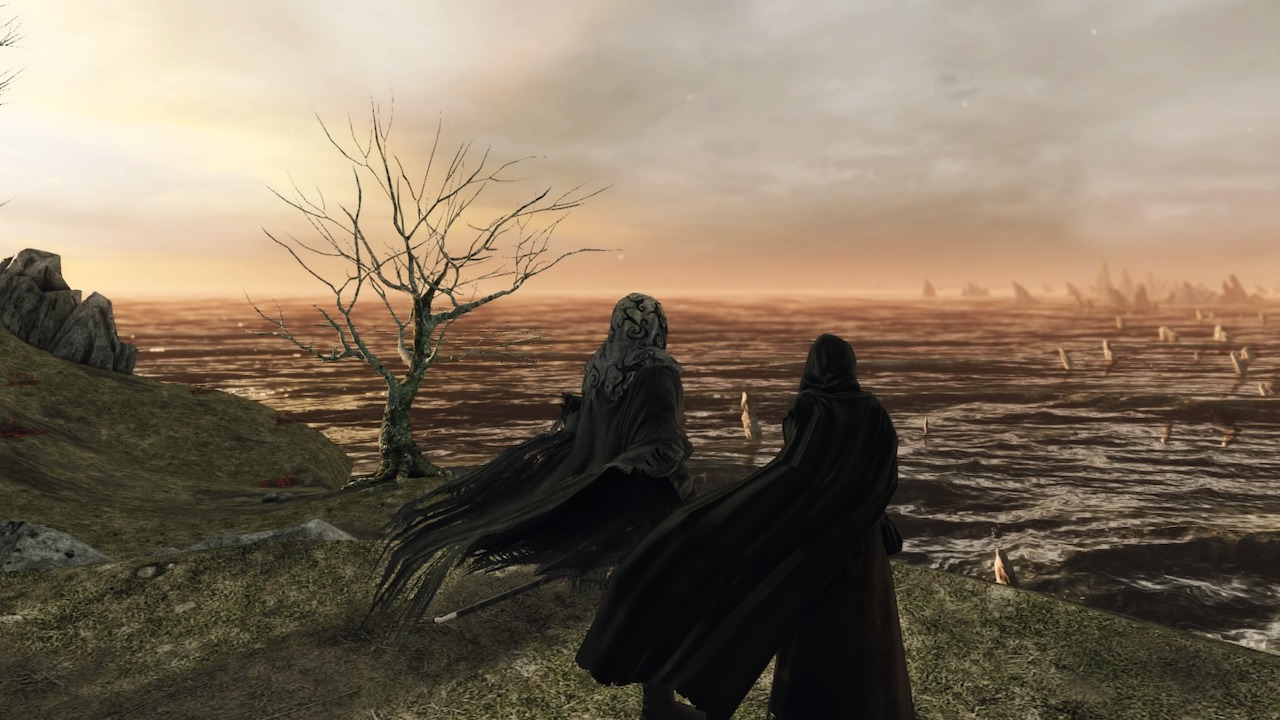Continuing the pattern of Dark Souls, which exiled the Undead to the Asylum and to Lordran, Dark Souls 2 places them in the small town of Majula. In this case, Majula is neither an asylum nor a jail meant to contain the undead – rather, it seems to be a gathering place built by the exiles themselves.
Historical lands of exile tend to be dangerous, faraway, barren, or all three. The undead village of Majula is certainly far from the centers of power: Iron Keep, Drangleic Castle, and the abodes of the other kings and people of note. With its narrow, treacherous cavern leading to the Huntsman’s Copse, but a formidable gate to hold back the hunters, it seems to be out of the long reach of the Old Iron King. The Queen of Drangleic seems to have turned her back on it, without so much as a single Drangleic soldier or operative to bring her word of its changes. Even Aldia’s lands are separated from Majula.
The undead town also seems to fit the bill of barrenness. Its rocky sea-cliff geography doesn’t allow much in the way of agriculture. Feral pigs inhabit one of its corners, posing a threat to any undead weak enough to be overwhelmed by their charges. Perhaps one might fish off its ragged coastline, but there is no obvious dock, nor any easy way to descend to the shore itself. Worst of all, a corpse has fouled the town’s single well. Fortunately, the undead seem to have little need to sustain themselves on food or water.
While Majula itself is rarely dangerous, a gaping, surprisingly well-constructed pit occupies the center of town. The Laddersmith informs the Bearer of the Curse that the few residents of Majula use the pit to discard their own refuse, including bodies. The opening is a hazard for an unwary dash across town as well as a gateway to the unknown below.
Paths lead directly from Majula to historical battlegrounds. In the Forest we find relics of the Giants. In Heide’s Tower of Flame, we find the quiescent knights of a land so comprehensively lost that only its name, and a handful of tower tops, remain. Gates separate Majula from a handful of truly deadly areas, such as Old Akelarre, an area drawing its name from the Basque word for a Witches’ Sabbath. While on the one hand they may contain the undead that settle in Majula, the gates also protect them: from huntsmen and sorcerers, and the servants of all of Drangleic’s major powers.
Even as an exile, Majula itself seems to be maintained by its inhabitants as best they can. It’s in relatively good condition, considering how the rest of Drangleic and its surrounding kingdoms are moldering apart. The town itself is sufficient to keep most of the undead out of reach of kings and queens, in the last place in Drangleic that remembers how to be a home.
As is often the case, thanks to @lidrens for their excellent contributions!
